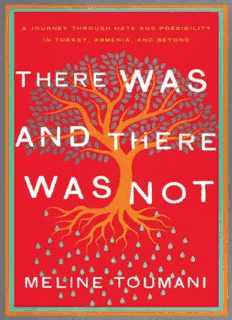
There Was and There Was Not: A Journey Through Hate and Possibility in Turkey, Armenia, and Beyond PDF
Preview There Was and There Was Not: A Journey Through Hate and Possibility in Turkey, Armenia, and Beyond
The author and publisher have provided this e-book to you for your personal use only. You may not make this e-book publicly available in any way. Copyright infringement is against the law. If you believe the copy of this e-book you are reading infringes on the author’s copyright, please notify the publisher at: us.macmillanusa.com/piracy. For Mom and Dad Contents TITLE PAGE COPYRIGHT NOTICE DEDICATION MAP NOTES ON LANGUAGE PART ONE: DIASPORA 1. When We Talk About What Happened 2. Summer Camp, Franklin, Massachusetts, 1989 3. “How Did They Kill Your Grandparents?” 4. A Real Armenian 5. False Assumptions 6. “With This Madness, What Art Could There Be?” PART TWO: ALTERNATE REALITIES 7. “So You Are a Bit Mixed Up Now” 8. “Armenians Are Killers of Children” 9. January 19, 2007 PART THREE: TURKEY 10. Paradoxes 11. Language 12. Knowing and Not Knowing 13. How to Be a Turk 14. Official History PART FOUR: ARMENIA 15. Country on Maps 16. Hello, Homeland! 17. Reunions PART FIVE: POWER 18. The Narcissism of Small Similarities 19. Excess Baggage 20. Soccer Diplomacy 21. Terms ACKNOWLEDGMENTS A NOTE ON SOURCES AND SELECTED BIBLIOGRAPHY ABOUT THE AUTHOR COPYRIGHT Notes on Language Because the issues I’ve written about in this book are highly sensitive for Turks and Armenians, every choice I’ve made is doomed to be a political act, even decisions on spelling. In my research, I have often lamented the frequency of error in the Turkish and Armenian media with regard to name spellings of members of the other ethnic group, and even as to whether a given name is male or female. Generally the mistakes are unintentional; but often they seem like evidence of a larger failure to engage, or to attempt to understand the other culture and take seriously its symbols. With this in mind, I’ve chosen to spell all Turkish names with Turkish spellings and diacritical marks, even though this may seem cumbersome to an Anglophone reader. GUIDE TO TURKISH PRONUNCIATION: The Turkish language uses Latin characters, a handful of which take special diacritical marks. Approximate pronunciations are as follows: c – hard j sound, as in “jar.” Turkish example: Cemal, often spelled in English as “Jemal.” ç – ch sound, as in “chicken.” Turkish example: Çarpanak Island. ğ – similar to w sound, but in practice nearly silent, such that Erdoğan sounds like “Erdowan” or “Erdo-an.” ı – similar to the “schwa” vowel sound, as in the first syllable of “again.” Turkish example: the final syllable of Diyarbakır. ş – sh sound, as in “share.” Turkish example: Paşa (“Pasha” in English). ABOUT ARMENIAN TRANSLITERATIONS: Armenian uses a distinct alphabet, so all transliterations of Armenian words into English are subject to debate. In some cases I have deliberately chosen to render a word in a specific dialect, or opted for the spelling most likely to be used by the group I am describing. For example, the word “Hai,” which means “Armenian,” is spelled as such in “Camp Haiastan,” but in the word “Bolsahay” I have kept the “hay” spelling typical in Turkish-Armenian usage. The most attentive Armenian-speaking readers will notice inconsistency in my rendering of the Armenian oo vowel sound. I have rendered it u in some cases and oo in others, depending on my own sense of how a given spelling will be interpreted by an English-speaking reader. PART ONE Diaspora
Description: